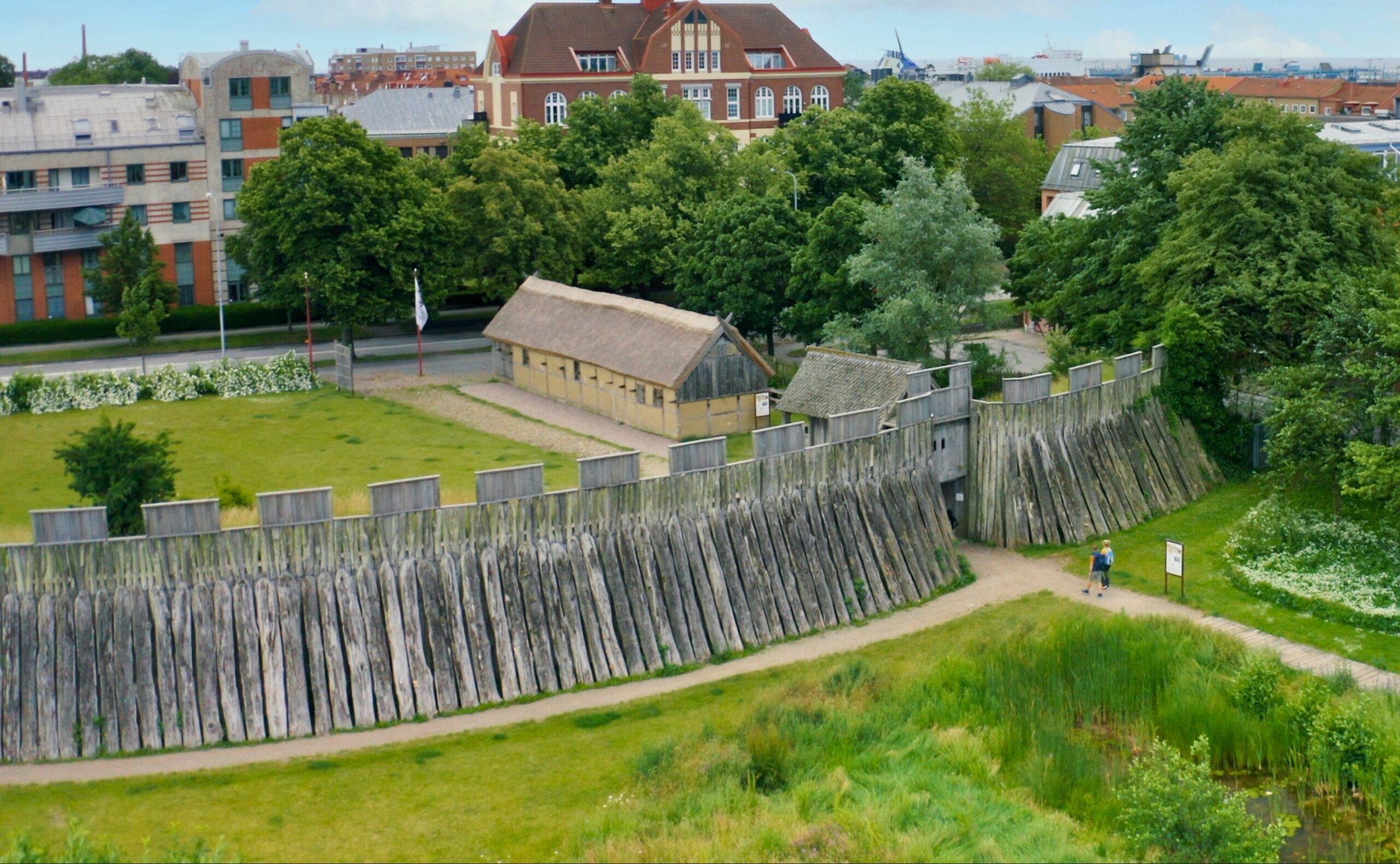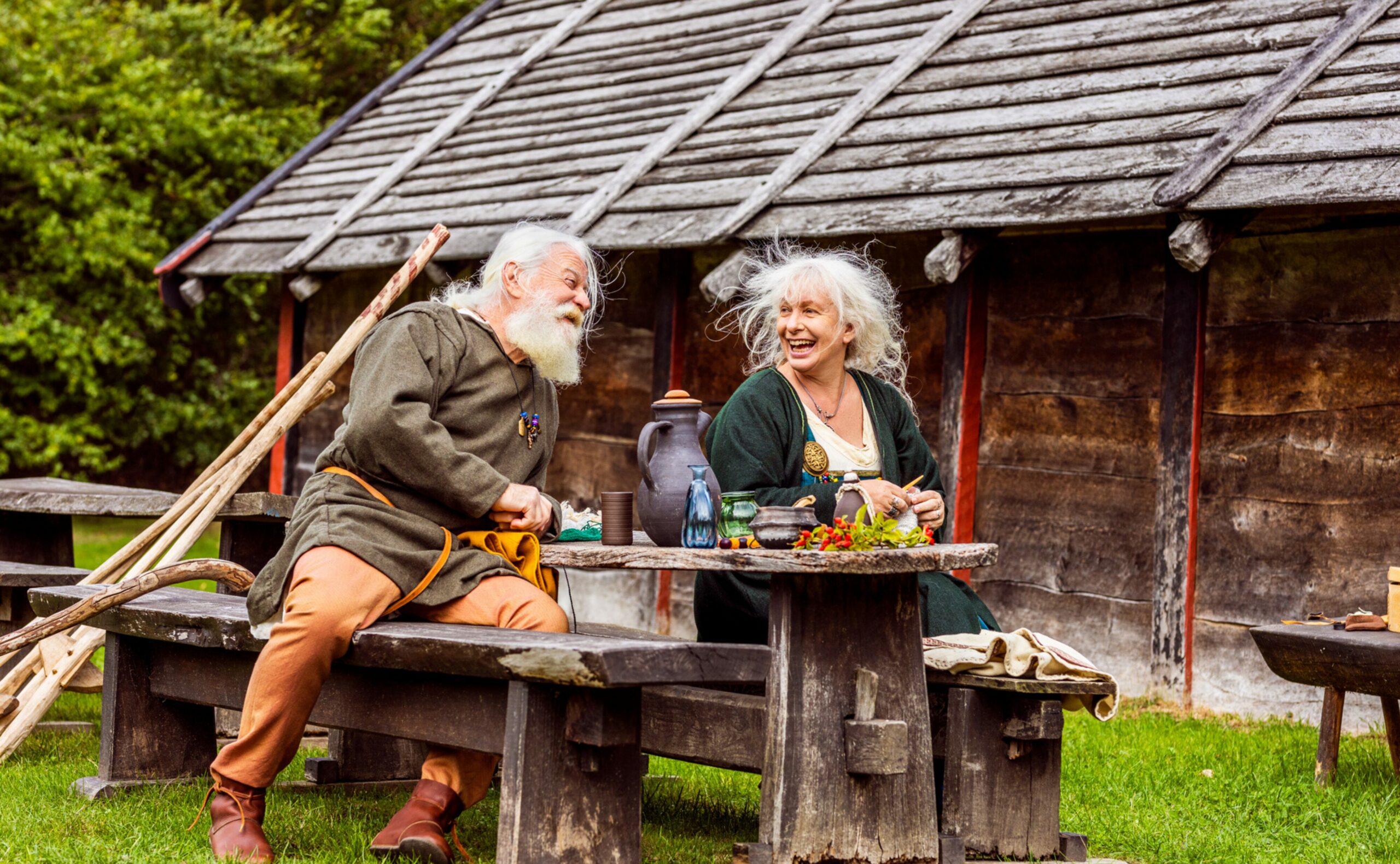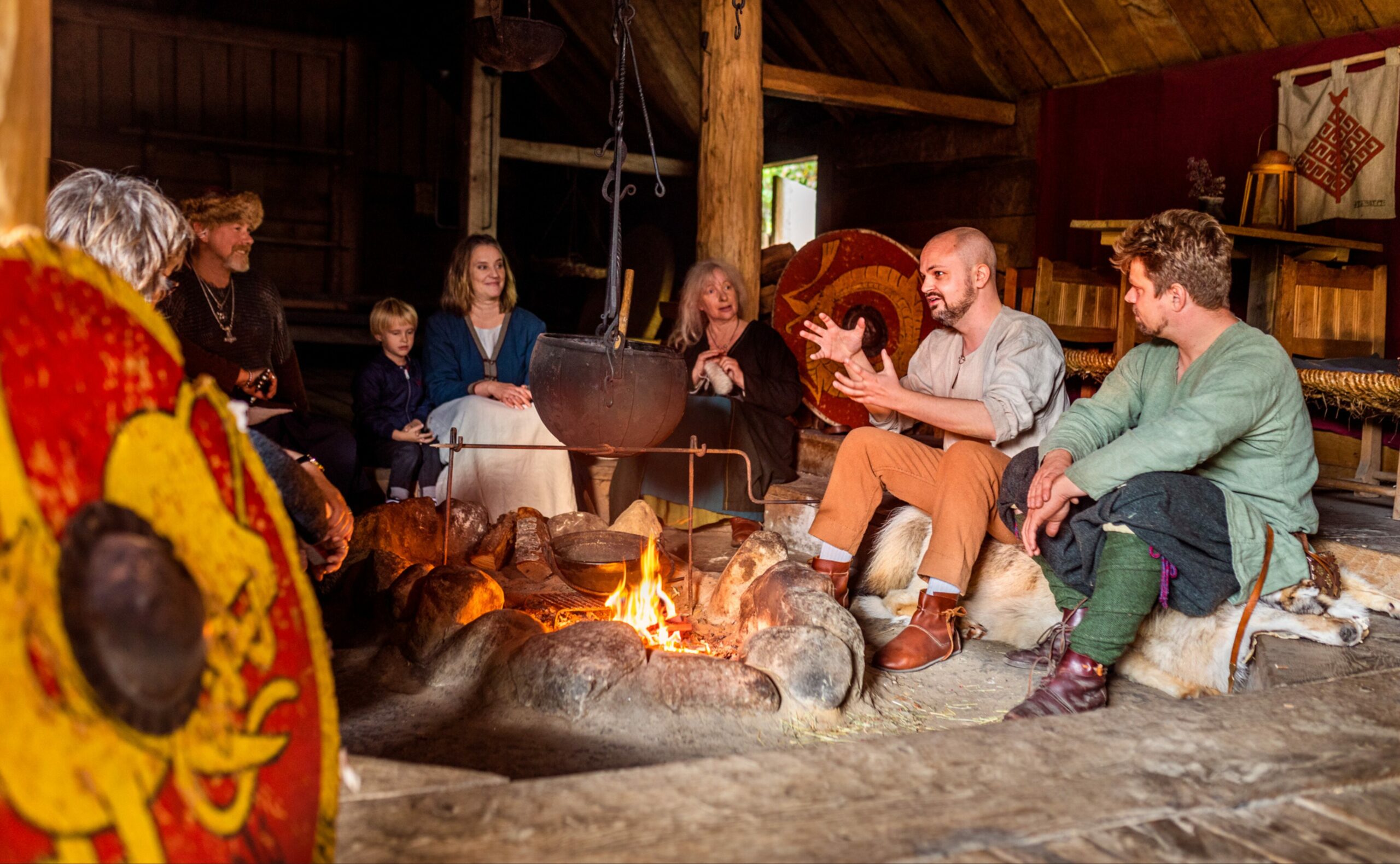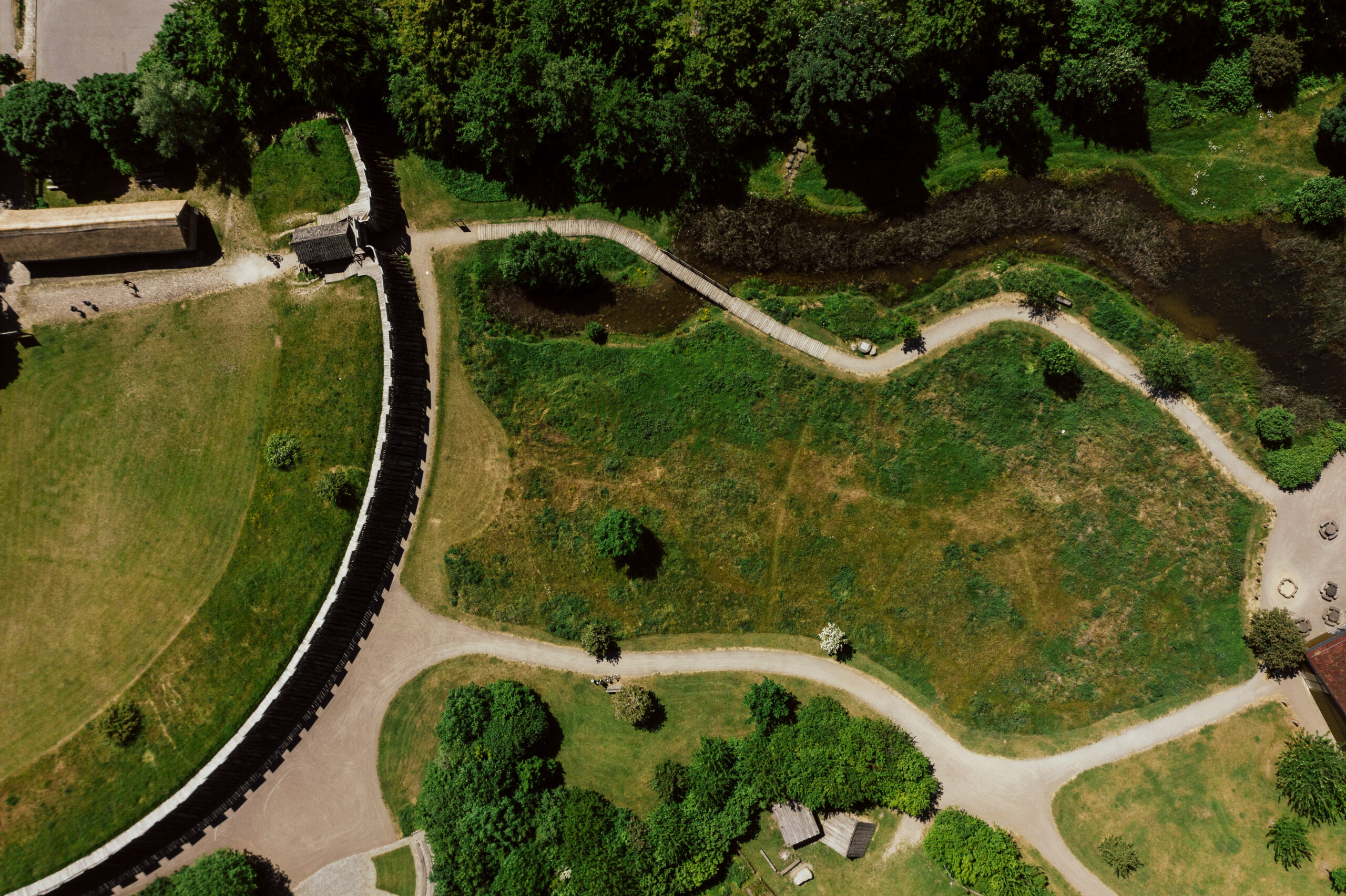Discover Trelleborgen
In Trelleborg, you’ll encounter the Vikings
A visit to the Viking fortress Trelleborg takes you back to the 9th century, when the Danish king Harald Bluetooth (at that time, Skåne was Danish) fought to Christianize and unite his Danish realm. Perhaps Trelleborg, with its strategic location on a hill by the coast, was part of his defense line?
Trelleborgen
In the late 1980s, a sensational discovery was made in the town of Trelleborg on the south coast of Sweden: the remains of a Viking Age circular fort. When investigated this archaeological find soon showed such marked similarities to the Danish circular forts of the late 10th century that it had to be one of their kind: a “trelleborg”, so named after one of the previously excavated Danish forts, Trelleborg near Slagelse in Zealand. The word ’trelle’ is used to describe the sloping head of a split log which supported the palisades. This very distinctive type of fortified compound is associated with the unification and defense of the Danish kingdom. Wood finds, dated by dendrochronology, place these forts around AD 980, in the reign of the Viking king Harald Bluetooth.

The reconstruction
In 1995, the reconstruction of Trelleborgen was inaugurated. The wooden construction with palisades, trelles, crenellations and gateway is quite imposing and was built based on the archaeological discovery, handicraft traditions and well-founded estimations. Archaeologists have confirmed that the fort in Trelleborg was approximately 140 meters in diameter. In the Viking Age, it was connected to the sea via a navigable stream and intersected by four well-travelled roads. A quarter of the fort has been recreated and is now an outdoor museum that also contains a Viking exhibition, café and shop. In the area you will also find a reconstructed Viking farm with a longhouse, pit houses with a blacksmith, a garden and a medieval house.
Vikings 800-1050 AD
In 793, Danish Vikings raided a monastery in Lindisfarne in northeastern England. Thus began a period commonly referred to as the Viking Age in Swedish historiography.
Despite its brevity, the Vikings’ influence on history is significant. The image of them as roaming pirates who traveled the world and plundered while wearing horned helmets is not entirely accurate. People living in the Nordic regions during this time mostly engaged in peaceful trade, although they possessed the ability to organize and build new societies where they settled. Many were farmers or craftsmen in their homeland. However, isn’t the image of the bold Viking with a helmet, shield, sword, sailing on large dragon ships somewhat intriguing?
Trelleborg and the southwestern Skåne region were significant during the Viking Age. The area was unusually densely populated, leaving traces that we can still explore today.


Experience the Viking age
How did the Vikings live? What did they eat, and what did their beds look like? And what clothes did they wear? At Trelleborgen, you get a glimpse into Viking life. Here’s what you can explore in the area:
• Trelleborgen with its wooden structure – impressive palisades, lattice works, battlements, and gatehouses – is based on archaeological findings, craftsmanship tradition, and well-founded guesses.
• The Viking Museum tells the story of the excavation of the fortress. In the museum building, there is also Café Odin and a shop with crafts, Viking jewelry, amber, pearls, books, and more.
• The Viking farm, with a longhouse furnished in period style, from benches to textiles, provides insight into the everyday environment of a Viking family. The farm also features pit houses and crops.
• The Medieval House is also recreated based on a discovery at the site.
• The pond outside the fortress serves as a reminder that boats could once travel right up to the palisade. Nowadays, frogs inhabit the pond – it’s incredibly exciting to watch and listen to!
Throughout the year, booked activities are offered here for everything from schools to businesses. During the summer months, the fortress opens up to visitors with lively environments and events, such as Viking markets and other Swedish celebrations.

Visit Trelleborgen
The guided tour takes you back a thousand years with exciting stories ranging from Viking battles to everyday life. During the summer, Trelleborgen offers activities for both adults and children – stories, runic writing, Viking games, blacksmithing, crafts, cooking, archery, and more. Every year, on the second weekend of July, Trelleborgen is filled with visiting Vikings. There are markets, Viking weddings, and the “Battle of Trelleborgen”.


